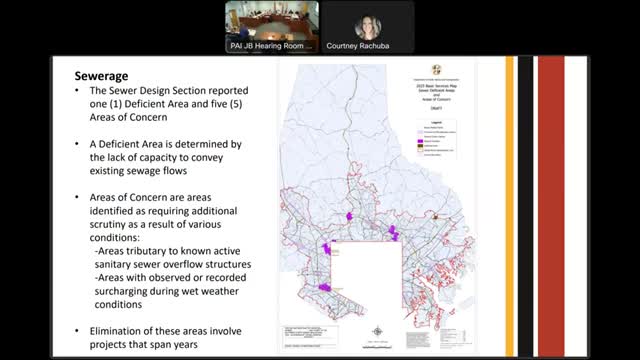Baltimore County upgrades sewer systems and targets sanitary overflow closures
February 07, 2025 | Baltimore County, Maryland
Thanks to Scribe from Workplace AI , all articles about Maryland are free for you to enjoy throughout 2025!

This article was created by AI using a video recording of the meeting. It summarizes the key points discussed, but for full details and context, please refer to the video of the full meeting. Link to Full Meeting
One of the key areas discussed was the Richland Manor Wastewater Treatment Plant in Perry Hall, which has been identified as deficient due to increased flow during storms. Rehabilitation projects are underway to reduce this flow, and plans for a new pumping station are in progress, aiming to eventually replace the existing treatment plant.
In Parkville, significant rehabilitation work has been completed to address overflows caused by stormwater infiltration. The Bureau of Utilities is currently working to close off problematic structures, with one already completed as of January 23, 2025. Similar efforts are ongoing in the Marnat Road area, where illegal connections have been eliminated, but further construction of a relief sewer is necessary before closing the overflow structure.
The meeting also addressed concerns in Brooklynville, where the area was designated as deficient by the Baltimore County Council, despite the Department of Public Works not identifying it as such. Developers are required to construct relief sewers to mitigate surcharging during heavy rains, with projects currently in the design phase.
In the Powder Mill area, four sanitary sewer overflow structures are set to be closed following extensive rehabilitation work, which has significantly reduced the risk of overflows. Lastly, in Catonsville, ongoing efforts to rehabilitate the sewer system are also aimed at closing overflow structures, although one will require additional construction by Baltimore City.
These initiatives reflect Baltimore County's commitment to improving its sewer infrastructure and reducing the risk of overflows, which have significant implications for public health and environmental safety. As these projects progress, the county anticipates removing several areas of concern from its maps, signaling a positive step towards enhanced wastewater management.
Converted from Baltimore County Planning Board Meeting and Public Hearing, February 6, 2025 meeting on February 07, 2025
Link to Full Meeting
Comments
View full meeting
This article is based on a recent meeting—watch the full video and explore the complete transcript for deeper insights into the discussion.
View full meeting